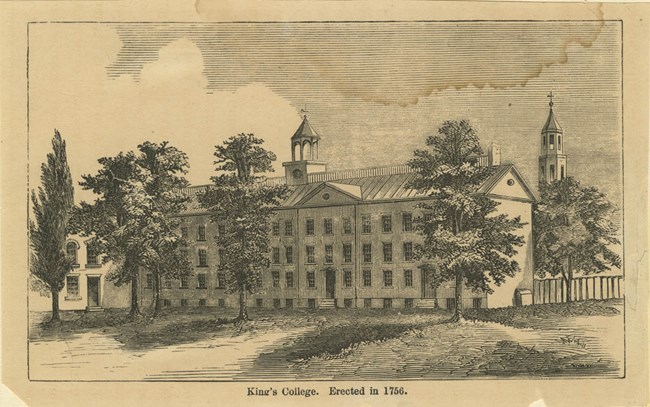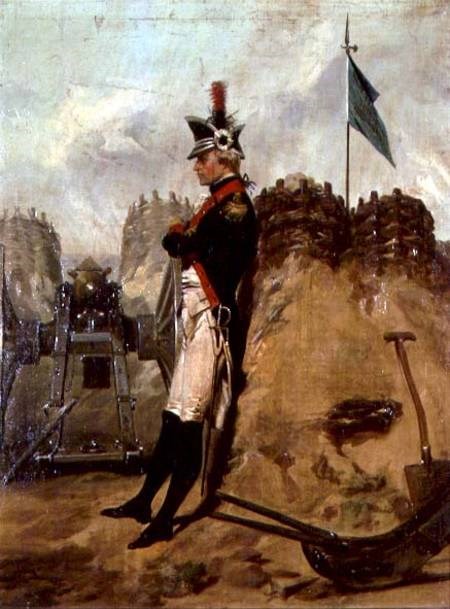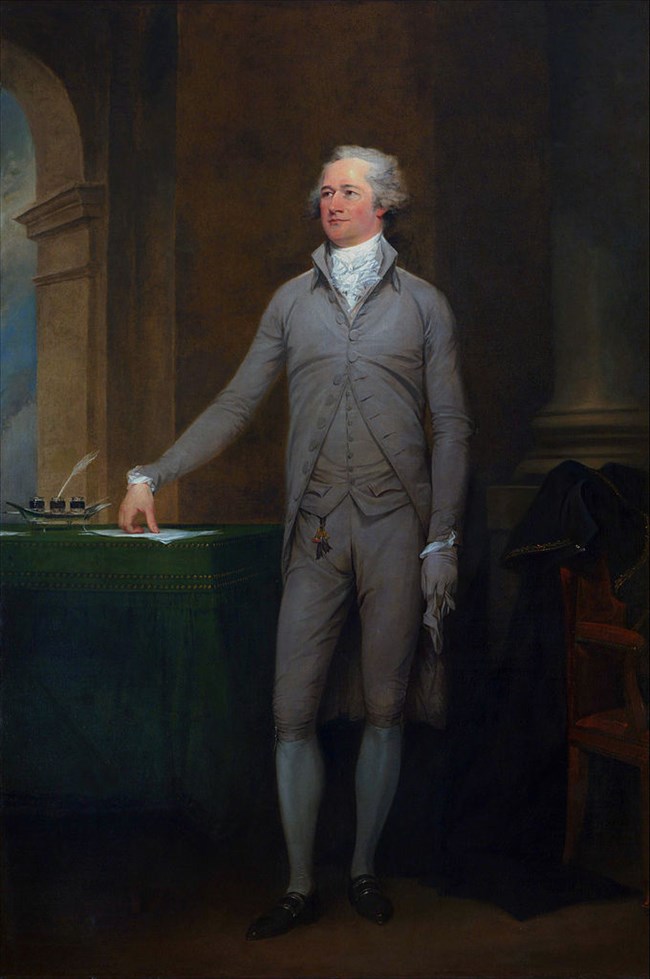Last updated: November 28, 2021
Article
Alexander Hamilton, New Yorker

NPS photo
College Years
When Alexander Hamilton moved to New York City, it was a bustling, booming town alive with political fervor. A port city and a commercial center, New York was filled with immigrants like Hamilton himself. After attending a preparatory school at Elizabethtown Academy in New Jersey, Hamilton officially entered King’s College, now Columbia University, in 1774.
As a teenager, he wrote two political pamphlets that marked him as a rising star of the revolutionary cause. These pamphlets are A Full Vindication of the Measures of Congress and The Farmer Refuted. While Hamilton fought for liberty, he loathed lawlessness and mob rule. On May 10, 1775, Hamilton stood in a doorway at King’s College to give its president time to escape from a mob of angry patriots.
He was determined to graduate in two or three years and raced through the curriculum, which included anatomy, Greek and Latin, literature, rhetoric, geography, history, philosophy, math, and science. But he never completed his course of studies and left school to fight in the American Revolutionary War. When the war was over, he helped to reorganize Kings College as Columbia University after a hiatus from classes due to the war.

Museum of the City of New York.
Military Years
When the American Revolutionary War began, Hamilton joined a militia and later served as a captain in the New York Provincial Company of Artillery. At the beginning of his military career, he participated in saving cannon at the Battery and battles such as the Battle of Harlem Heights. In the months that followed, George Washington recognized Hamilton’s talents and made him his Aide-de-Camp with the rank of Lieutenant Colonel.
Political Career
After his military service, Hamilton returned to New York where he passed the bar exam to practice law. In 1782, he was appointed to the Congress of the Confederation as a representative from New York and later served as an assemblyman in the New York State Legislator. His father-in-law, Philip J. Schuyler, elected him to be a delegate to the Constitutional Convention in 1787. After the convention, Hamilton along with James Madison and John Jay wrote the Federalist Papers to convince New York to ratify the U.S. Constitution. Writing 51 out of the 85 essays, Hamilton completed the bulk of the work.

Metropolitan Museum of Art
In 1784, Hamilton helped to establish the Bank of New York. In 1781, the Bank of North America was the first bank established in the United States in Philadelphia, Pennsylvania. To assist New York commerce, Hamilton wrote the bank’s constitution. This document inspired other banks to follow a similar model.
In 1801, Hamilton hired John McComb Jr. to design his country home in Harlem. In the same year, he founded the New York Evening Post. In the wake of Thomas Jefferson’s election to the U.S. presidency, Hamilton sought to create a federalist newspaper. The newspaper is still in existence as the New York Post.
Hamilton’s impact on society reaches far beyond New York City, but it was the backdrop to his many personal and professional developments. For generations after his death, people have chosen to preserve his country home for his role in establishing the United States. As the city and country changes around it, the home stands as a piece of the person who helped to set the stage for the young nation’s future.
